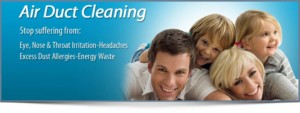
Tips To Improve Indoor Air Quality And Curb Seasonal Allergies
If you experience allergies, you may be quick to correlate seasonal irritations with outdoor triggers such as ragweed, pollen and mold. However, poor indoor air quality in your own home could be the suspect to blame for runny noses, itchy eyes and in some cases, serious symptoms like respiratory issues, bronchitis and asthma.
The Environmental Protection Agency found in a survey that Americans spend 87% of their lives indoors and that indoor air pollutant levels are up to 100 times higher than levels you may find outside. While it’s alarming to think about how many toxins you are potentially exposed to on a regular basis, there are simple steps you can take to boost the condition of the air you breathe in your home.
Improve indoor air quality
Avoid Smoking Indoors
There is no acceptable level of exposure to secondhand smoke. Smoking indoors one time is enough to pollute the rest of the house, even if you’re in a room with the doors closed.
Vacuum Often
Invest in a durable vacuum and disinfect your carpets regularly to eliminate dust and other pollutants brought in from outside.
Soak Bedding
Wash sheets, pillows and comforters in warm water often to cut down on exposure to dust mites and other allergens.
Crack Windows
Most heating and cooling units recirculate inside air so when weather permits, let fresh air in, if even just for a short time.
Keep a Hygienic Home
Clean your home regularly using non-toxic cleaning supplies.
Discard Unused Chemicals and Paint
Paint outdoors and choose non-toxic adhesive, finishes and varnishes where possible.
Groom Pets
Bathing and brushing your pets regularly will decrease shedding and dander.
Use the Exhaust Fan Over Your Stove
The benefit of an external exhausted range hood is that it pulls out potentially toxic pollutants and gasses from the air in your kitchen.
Use Fans in Bathrooms
Exhaust fans eliminate moisture from the bathroom and reduce fumes from cleaning agents that could potentially cause health issues.
Replace Air Filters
switching out the air filters in your heating and cooling system on a regular basis is crucial to cultivating good indoor air quality in your home.
Clean Air Ducts
Most of the in-home air arrives through ducts as part of your heating and cooling system. Those air ducts can get dirty with microbes, mildew, bacteria and loads of dust and dirt.
Regular duct cleaning can remove built-up debris.
In addition to these essential steps there are several advanced choices for contending with allergy-inducing pollution in your home.
Whole-home central humidifiers keep humidity within one percent of your desired levels throughout your home, creating a healthier environment by lessening dry sinuses, itchy skin and sore throats and keeping wood from deteriorating or warping. They can also curtail the occurrences of bacteria, viruses and respiratory infections. Proper humidification levels are equally important in both hot and cold environments. Too little humidity leaves the body vulnerable to infections whereas too much humidity establishes ideal breeding grounds for mold, mildew and dust mites.
Options for high-efficiency air filtration and cleaners that kill airborne contaminants include High Efficiency Particulate Air Filtration and Germicidal UV Light Systems.
Energy Recovery Ventilation Units bring in the correct amount of outside air which is especially necessary in the fall and winter months ahead.
Edwards Air Conditioning can offer a free home air quality and comfort analysis so you can rest assured that your family is breathing the healthiest air possible.
Improve indoor air quality today!
Click here to schedule







